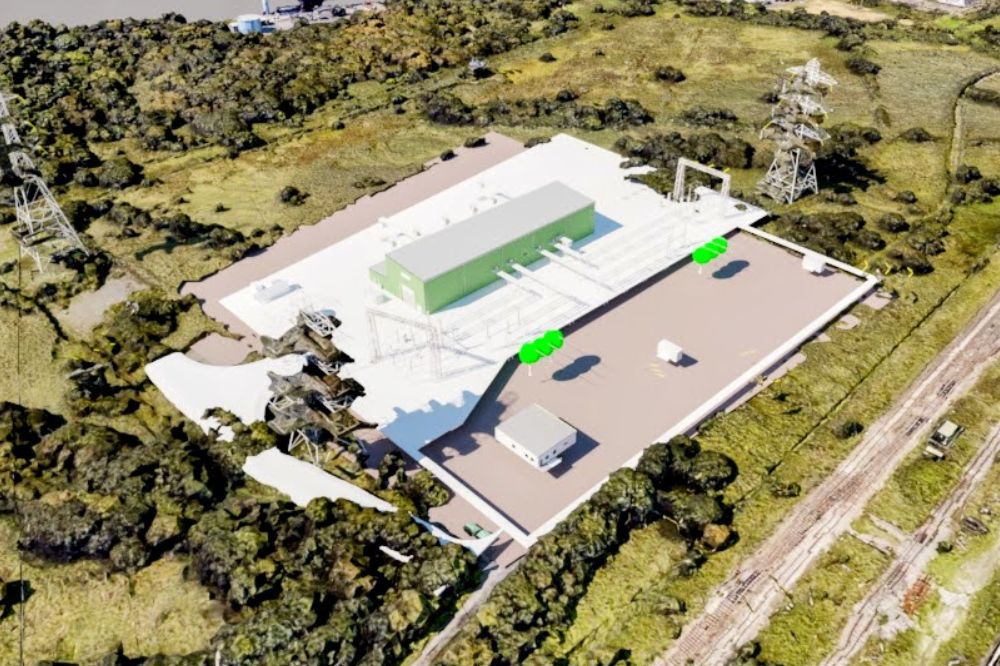National Grid shares plans for network upgrades in Port Talbot to support green steel transition

National Grid will upgrade infrastructure in Port Talbot to support the transition to Tata Steel’s new electric arc furnace.
It comes as the steel firm begins its move towards green steel production with the new electric arc furnace set to be switched on in 2027.
Tata insists the move will cut Port Talbot’s emissions by 90%, while ensuring the future of steel production in the town.
National Grid’s proposed Margam Connection Project will see the expansion of the existing Margam site with a new 275kV gas-insulated substation (GIS)
Residents and businesses have been invited to hear the details at a special event in Margam Community Centre on Thursday (July 17).
Capacity
Plans for a second 275kV GIS on the Tata Steel site, and an underground cable connecting the two substations, were part of a separate planning process.
The project is a key step in enabling green steel production at Port Talbot and in supporting local jobs, while also providing capacity for future energy connections in the region.
On Monday (July 16), Tata Steel broke ground on its greener furnace at Port Talbot, marking the start of construction on its new low carbon steelmaking facility that will be powered through the new substations.
National Grid will be working with principal contractor Laing O’Rourke to build its two new GIS facilities, both using innovative switchgear technology which is free from sulphur hexafluoride (SF6) – a commonly used electrical insulator that is also a potent greenhouse gas.
Using SF6-free insulating gas in the substations helps reduce the sites’ physical and environmental footprints, and marks another step towards National Grid’s ambition to reduce SF6 emissions from its network by 50% by 2030.
Application
The project will hold a 28-day statutory pre-application consultation (PAC) before National Grid submits its planning application to Neath Port Talbot County Borough Council later this summer.
Richard Gott, project director at National Grid Electricity Transmission, said: “Our Margam Connection Project will help deliver a cleaner, more secure energy future for South Wales, while supporting sustainable growth in one of the region’s key industries.
“By enabling the electrification of Tata Steel’s operations, we’re not only supporting the UK’s transition to green steel but also helping to safeguard jobs and strengthen the local economy. We look forward to engaging with the community and hearing their views.”
Laing O’Rourke’s managing director for its Europe hub, Peter Lyons, said: “We’re proud to be part of the Margam Connection Project delivery team, continuing our partnership with National Grid.
“Through early collaboration, we have worked together on the design and implementation programme, National Grid has valued both our unique operating model and our technical expertise.
“This project is another fantastic example of how we’re helping to deliver cleaner and more secure energy for the UK.”
Support our Nation today
For the price of a cup of coffee a month you can help us create an independent, not-for-profit, national news service for the people of Wales, by the people of Wales.





This new 275kV substation would suggest a new feed will be built from the 400Kv transmission line, that crosses south Wales. This will allow the electric arc furnace will draw it’s power from the 2,200Mw gas power station at Pembroke. Hardly a green investment.
It’s obviously connecting to the 400kV line but they’re making use of electricity generated east of Port Talbot, which will be ‘green’ hence minimises tariffs in countries implementing border carbon tariffs
Not so. The Gas powered power station in Pembroke (2,200Mw) is way in excess of demand in South West Wales. That 400Kv transmission line has on one purpose, to export electricity to England. The only reason it’s in Pembroke is that Milford Haven a deep water port allows the import of gas, via LNG tankers, from Qatar. The flow to Port Talbot does not, and will not, come from the east. Also, the load is far in excess of the abundance of wind turbines within South Wales.
Spot on.
Shame there isn’t a tidal lagoon right next door.